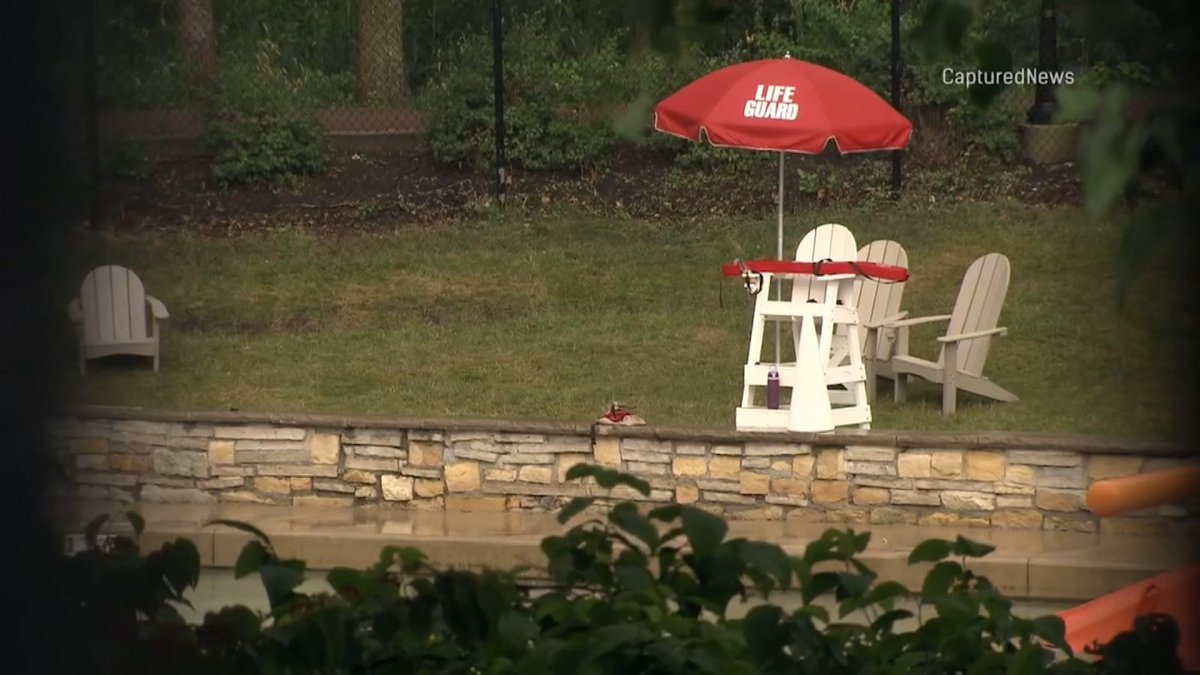Last summer, one of the most sought-after recruits in college football wasn’t a quarterback or a defensive lineman. It was a 21-year-old YouTuber in Kentucky.
James Bordeaux had put out a series of videos and Twitter posts to narrow down which school he would play as in his first Dynasty Mode rebuild video after the release of the EA Sports College Football 25 video game. His self-started campaign got so much attention that football programs reached out, sending gear and graphics as if he were a prospect. The winner: Nebraska. The resulting video got 1.1 million views.
Many see YouTube as the future of sports consumption. The NFL will broadcast its Chiefs vs. Chargers Week 1 game on YouTube in September. But for younger fans, YouTube is the present. Polling indicates Gen Z spends more time watching highlights than it does live games. Golf has developed a huge presence on the platform.
Before NCAA athletes were allowed to monetize their name, image and likeness, former UCF kicker Donald de la Haye was forced to choose between his YouTube channel and continuing to play college football in 2017. He chose YouTube and now has more than 6.2 million subscribers.
College sports fandom has long been led by old-fashioned booster clubs and message boards that popped up 20 years ago. But YouTube is becoming a new ground for college fandom, especially with the return of EA Sports College Football, and dozens of people like Bordeaux have turned creating videos about the video game into a full-time job, gaining enough influence to impact the game itself.
“It shows how deep people’s love for their team is that they were so interested in what a random guy on the internet was going to do, because it could be their team,” he said.
Bordeaux started his YouTube channel four years ago as a high schooler who just wanted to talk about his favorite video game, which he’d been playing since he was 6.
He took viewers on hours-long journeys in previous editions of the NCAA Football video game, like rebuilding Kansas football or creating North Dakota State as an FBS program. His first goal was to make $100 a day from YouTube’s creator ad-revenue program.
The channel hit that mark quickly and kept growing, so Bordeaux dropped out of college at Northern Kentucky, moved to Florida and made it his full-time job. He now has more than 476,000 subscribers, and he says he spends 80 hours a week on it during football season alongside a team of three editors, making videos with titles like “5 Years to Rebuild the WORST CFB 25 Team” or “Can I Win a Title with ONLY Players from Hawaii?”
“It took off so fast that I had no choice but to keep pouring hours into it,” he said. “I dropped out a few months after starting it, which was risky, looking back on it. Kind of dumb. But it paid off.”
Gaming is massive on YouTube. A recent report from the company stated that 60 percent of the top 1,000 channels on YouTube had uploaded at least one gaming video. The rise of “Let’s Play” videos, where creators film themselves playing and reacting to games, changed the way developers produce games that are customizable and, theoretically, never end.
That applies to sports games, especially the College Football franchise. There’s no speed-run to “beat” the game. With 136 FBS teams and various game modes, YouTube creators have an abundance of quest options.
“You can play Madden and win the Super Bowl, but where do you go after that?” said College Football principal game designer Ben Haumiller, who has spent more than 20 years at EA Sports. “We have constant roster turnover. You can start at South Alabama and work your way up to Alabama. You can bring the option to Michigan or go rebuild the Pac-12. Things like that, no other game gets to tell.”
There’s no one way to go about being a college football video game YouTuber. Former college and NFL quarterback Kurt Benkert (351,000 followers) mixes real and video game football strategy. Another creator, Eric Rayweather (637,000 subscribers), turned football game tutorials into a full-time job.
Rayweather, 37, was a successful Madden player more than a decade ago, winning tournaments and climbing online rankings. As he got older, got married and didn’t have as much time to play, he’d look for tips online and didn’t find much. So he drew on his skills and began making Madden tutorial videos, such as the best way to beat a Cover 4 defense or how to use glitch plays discovered in the game.
A year into it, he was making more money through YouTube than from his jobs at a paint store and Best Buy, so he made YouTube his full-time job in 2018.
“I had a good bit of money saved up and thought, I’ve got a year, I could try this out,” said Rayweather, who lives in Louisiana. “It was scary, because it could’ve gone the other way. But it grew even more, and I haven’t looked back since then.”
Rayweather expanded his tutorials to college football when the game returned and began to lean into news updates. Any leak or announcement that comes out about the next game, he jumps on and makes a new video about it.
Rayweather estimated he spends 12 hours a day on the job at this time of year. That schedule slows a bit after a game comes out, then shrinks to as low as four hours a day when football season ends. Unlike some other creators, he’s a one-man operation.
“Right now, it’s pedal to the metal,” he said.
For a long time, EA Sports developers were not allowed to engage with the gaming community, typically only speaking with video game journalists. But as the industry changed, YouTubers became influential and trusted voices.
“Back in the day, every reviewing outlet had a dedicated sports person,” Haumiller said. “Now, they’re more freelancers who don’t know as much about your game. It’s these (YouTubers) pointing things out that we need to do better and know the game just as well as we do.
“The perception of your game these days has a lot to do with the perception from the community.”
EA Sports has leaned in to earn the favor of that community. For years, the company has invited gaming journalists and YouTubers to Orlando to get an early look at Madden and now College Football.
When EA Sports held the secret College Football 26 cover photo shoot at the Rose Bowl, Bordeaux was there to document it for his channel. A week before CFB26 was released, EA Sports enlisted Bordeaux and Rayweather to produce public reveal videos of Dynasty and Gameplay features. Some creators have also created sponsored social media posts for the game, marking them as ads.
“They’re advocates, good or bad,” Haumiller said. “They’re also a tutorial for us. You can go on and see these guys doing different ways to recruit in CFB 25 or show great plays to use. They really help us teach the game in a way we aren’t able to.”
Some fans have questioned the legitimacy of a review from a creator if EA Sports played a role in facilitating it or paid that creator for previous sponsored posts. Bordeaux recently had a small online feud with another creator, Ryan Moody, whose content is largely negative toward EA Sports. Bordeaux has tried to disclose when EA Sports was involved with a post.
“I do feel bad for these guys, because they do kind of sign up for this additional punishment they get when all they get in return is maybe a code a couple days early,” Haumiller said. “They’re not on the payroll or getting all kinds of insider access.”
Surveys show more kids aspire to be YouTubers or streamers than scientists or astronauts. The rise of entertainers like Logan and Jake Paul or Mr. Beast has shown a new path for younger people that didn’t exist even a few years ago.
Bordeaux never imagined how quickly this could become a career.
“Maybe something I did on the side for fun to make a little extra cash,” he said, “but I didn’t think I could ever personally reach the sub or view count I’ve been blessed to have.”
Rayweather’s advice to aspiring YouTubers is to have a plan and stick to it, be knowledgeable and focus on good audio. Bordeaux joined him in emphasizing the importance of consistent posting.
“Anybody can make at least a side living doing any type of creation,” Rayweather said. “Be informational. Help people. Give them value for something.”
Days before the CFB 26 release, Bordeaux was once again narrowing down finalists for his first dynasty rebuild. Marshall coach Tony Gibson tweeted at him and got the Herd into Bordeaux’s top five. Central Michigan coach Matt Drinkall tweeted a photo of Bordeaux on the stadium video board.
Recruiting never stops in college football, and courting a YouTuber is now as valuable as any other kind of celebrity. The media industry is far from the days when coaches welcomed an airplane full of sportswriters for a promotional tour half a century ago.
The return of the college football video game has put the sport back in front of a generation of new and old fans. But the cascade effect has also created a new collection of influencers — and a lucrative business — on the new frontier of fandom.
(Photo courtesy of Bordeaux)










 : https://t.co/RPX7WFuP8g
: https://t.co/RPX7WFuP8g 














































